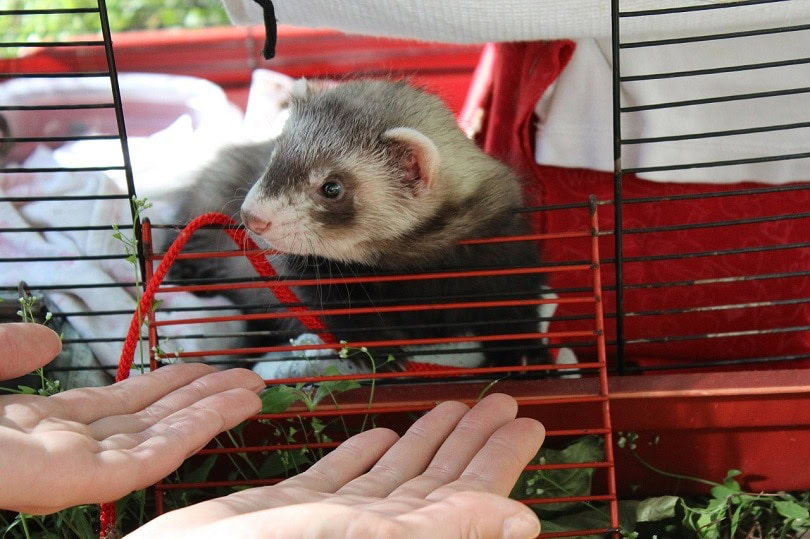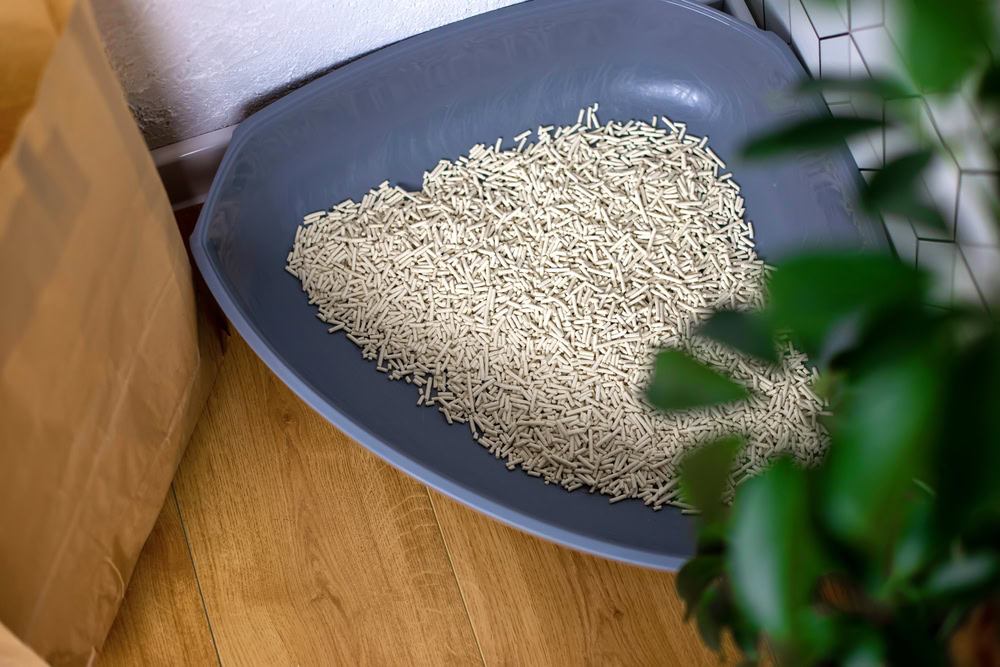Cats are known for their flexibility and agility. However, when we compare cats to ferrets, ferrets are on a whole different level. They are so flexible that people often ask, do ferrets have bones? We can assure you that ferrets have bones, spines, and lots of structural makeup, even though they act like they’re made up of nothing but liquid. Let’s take a deeper look at how these animals move.

Do Ferrets Have Spines?
Ferrets are mammals with flexible spines. They have 15 thoracic vertebrae, 5 lumbar, and 3 sacral vertebrae, which allows them to bend their long bodies in unnatural positions.1 Those positions may look painful to us, but to them, they are as common as standing straight or sitting in a chair.
Actually, one of their favorite sleeping positions is called a “ferret donut.” They use their bottom as a pillow, and their body is curled up in the shape of a donut, hence the name.

Why Is a Ferret’s Spine So Flexible?
Their unique spine is an evolutionary adaptation that allows them to chase rabbits, mice, rats, and other small animals through tight spaces. Thanks to their spine, they don’t lose agility while running in underground tunnels, which makes them efficient hunters. They can also make a U-turn in a small space.
Usually, we can see a ferret running around with an arched back. But, when a ferret is underground, their torso straightens, making them around 30% longer but with the same speed as above ground. A ferret’s back vertebrae are designed differently than other animals.
In other animals, vertebrates have small tips called processes that stop the movement of the spine if it bends too much. In ferrets, those processes are much thinner, which allows the spine to bend more, creating the ability to move in the most impressive ways.
Do Ferrets Have Bones? Are They Flexible Too?
A ferret’s entire skeletal system is flexible, which allows them to enter holes smaller than 2 inches. If their head can fit through a hole, you can be sure their entire body can fit, too. Another feature that allows ferrets to enter such small spaces is their ribs. Their ribs come in pairs of 15, slightly more than the 12 pairs in a human.
The most interesting part about the ferret’s ribcage is the fact that it is collapsible. When a ferret goes through a narrow space, their ribcage flattens out for easier and faster travel. That is why ferrets can crawl under the door or escape through the wires of their cage.

Can Ferret Break Bones?
Yes, ferrets can break their bones, even though they are flexible. The biggest problem with ferrets is that they are fearless, sometimes to a fault. They will climb, burrow, dig, jump, and run around without considering their safety or consequences. That is why many ferret injuries can end in the worst way possible.
One of the biggest dangers when it comes to ferrets and breaking bones is breaking their impressive spine due to falling from a great height, like from the top of a closet or out the window. Back injuries in ferrets are severe, and most are fatal, so keeping your pet ferret safe at all times is very important.
They have one of the longest spines in the animal kingdom, and it is the most important part of their skeleton. Every other bone is prone to breaking as much as the spine, but the entire healing process can be faster and much simpler on other parts of the body.
The Importance of Ferret-Proofing Your House
The best way to keep a ferret safe is to ferret-proof your home. Keep a ferret-safe room where your ferret can’t climb on the furniture, explore the interior of the cabinet, or fall asleep in the recliner. Those are the most common places where ferret accidents happen and end up with ferrets being squished in the mechanism or falling from the furniture.
How to Hold a Ferret?
If you hold a relaxed ferret, they should be so loose you could theoretically touch their bottom to their head, and they wouldn’t move a muscle. Despite being so flexible, it matters how a person holds a ferret. If you hold them the wrong way, you can cause muscle sprains, back pain, and other injuries.

There is a proper way to hold a ferret. If you don’t want a ferret to nip you and you want them to feel comfortable in your arms, here is what you have to do:
- Grab the ferret under their front legs with your fingers right around their ribcage. Hold the ferret gently but with enough force to prevent them from escaping. That way, they cannot bite you or scratch you with their toenails.
- Your other arm should go under the ferret’s bottom. It is vital to support the ferret’s back legs so you are removing the strain from their back. You don’t have to squeeze the back legs up to the ferret’s front legs. It is enough to support the legs so that the ferret looks like they are standing on their back legs. A ferret will be comfortable this way because their body won’t hang in the air.
- When you are holding the ferret correctly, you are actually doing two things. You are keeping them comfortable in your arms and controlling their back legs. When a ferret is bored and wants to get out of your grip, they will use their back legs to escape. So, by holding and supporting their back legs, you are also holding the back legs in one place, preventing them from scratching you on the hand below the front legs.

Final Thoughts
Looking at ferrets sleeping, jumping, or running around raises the question, do ferrets have bones? Their flexible spine makes them so impressive but also gets them into trouble. That is why every ferret owner needs to know the importance of ferret-proofing their home before welcoming one of these little creatures.
Featured Image Credit: Kerry Hargrove, Shutterstock










